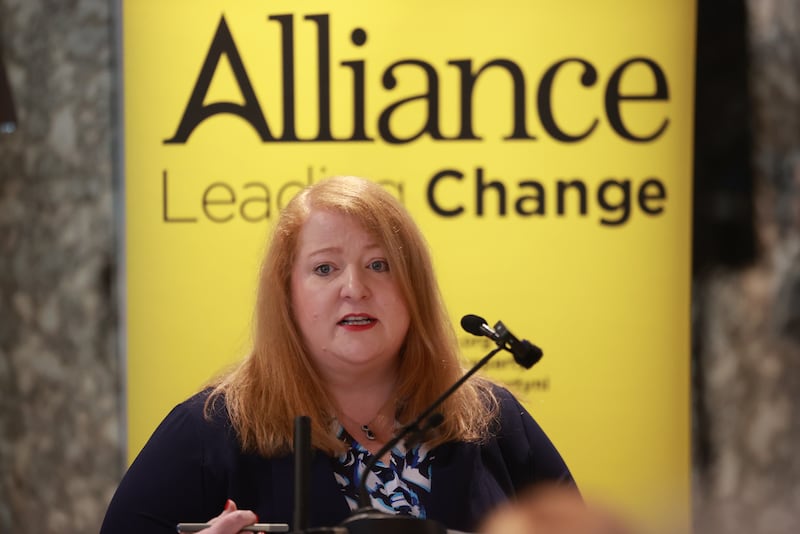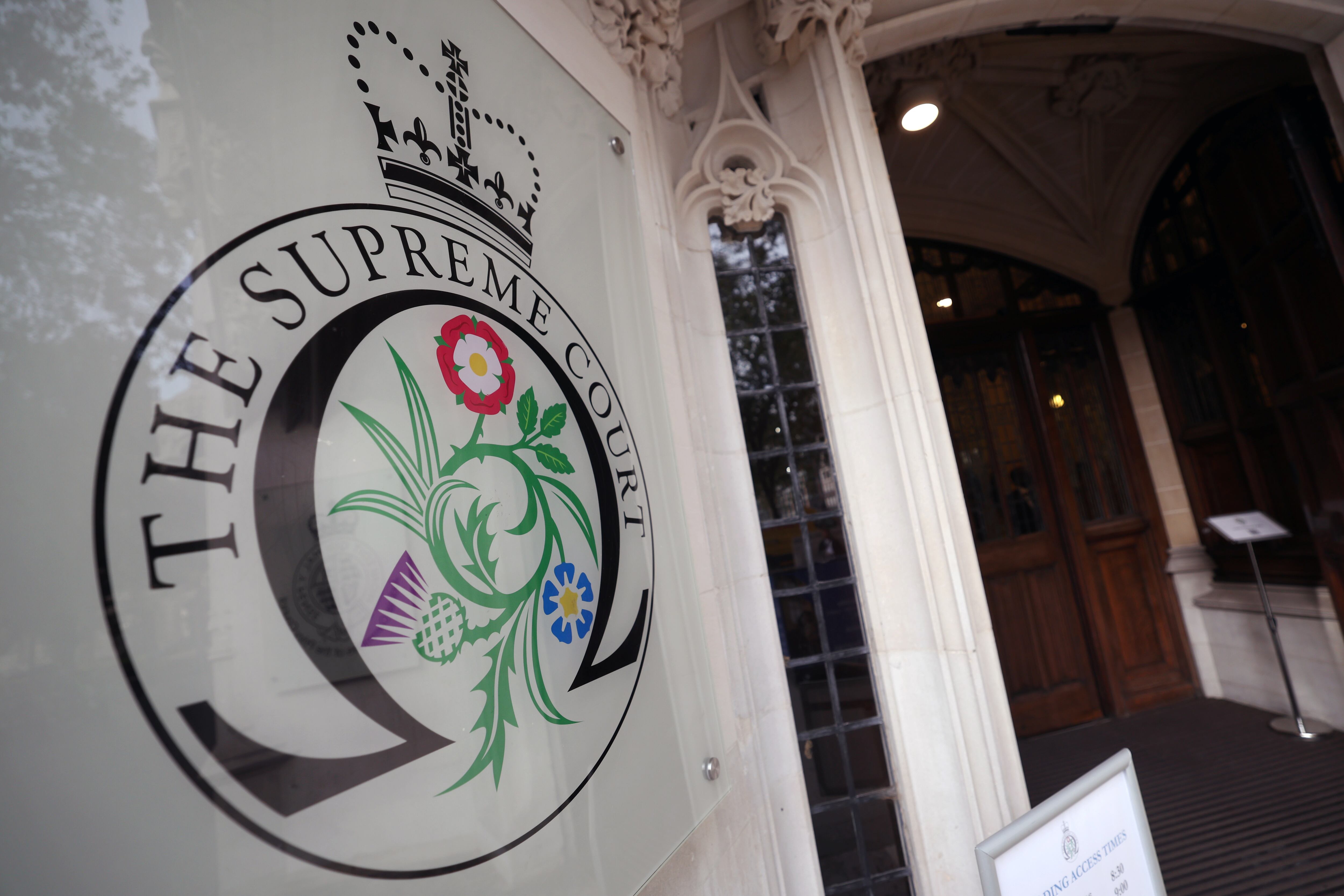As Northern Ireland prepares to go to the polls on Thursday, some parties have more reason to worry than others.
Chief among these worriers is the ruling Conservative Party. Even though voters in Northern Ireland do not have a say in the outcome of the overall contest between the Tories and Labour, many will be keenly watching into the early hours of Friday morning to see if there will be, as polls predict, a change of government at Westminster.
They will also be contemplating the consequences of the election on Northern Ireland, on public spending, on negotiations over how the North is funded and on trade with the EU.
They will be looking to the next government’s stance on the Legacy Act, the controversial law which the UK government says “will draw a line” under the Troubles by replacing existing methods of investigating the past with a new investigative body – a law that Labour leader Keir Starmer has pledged to repeal.
READ MORE
Voters in the North will also be looking to whether the next UK government brings the prospect of improved relations between Dublin and London and what that might mean for Belfast.
As for internal politics in the North, the DUP has most cause to be nervous.
The unionist party goes into this election with eight seats – more than any other party – but is under pressure to hold three of them: East Belfast, Lagan Valley and South Antrim.

Potentially, the greatest peril facing the party is in East Belfast. This is the battle of the two party leaders: Gavin Robinson of the DUP, the constituency’s MP since 2015, against the Alliance leader Naomi Long.
In the last general election in 2019, Robinson defeated Long by 1,819 votes; this time, another factor in the mix is the presence of the right-wing Traditional Unionist Voice (TUV) – No Sea Border candidate, John Ross.
The TUV did not stand in 2019; the last time it did, in 2010, Long won the seat – the only time in decades it has been lost by the DUP.
Here, as in other constituencies, a split in the unionist vote could pave the way for an Alliance victory – hence the DUP’s oft-repeated call to avoid a “splinter in the pro-union vote” by “sitting at home or voting for smaller parties you know can’t win”.
The risks for the DUP – and Robinson himself – are great. If he loses his seat, he also – in theory – loses the leadership; according to the DUP’s constitution, the party’s leader must be an MLA or an MP.
The way round this is through co-option into the Assembly; this is not an ideal option for a party on its fourth leader in as many years.
“Obviously the optics are awful,” says Jon Tonge, professor of politics at the University of Liverpool. “You would have the Deputy First Minister [Emma Little-Pengelly], the DUP’s nominee, who is a co-optee, and you would have the leader of the party who is a co-optee – it would be a monstrous embarrassment for the party.”
It could get worse. In the numbers game of Westminster seats, the current tally is eight DUP, seven Sinn Féin, two SDLP and one Alliance; a single loss for the DUP would – assuming Sinn Féin retains its seven seats – put the two largest parties even.
One more loss – or on a particularly bad day, two – would put it firmly into second place, and allow Sinn Féin to complete the set, as it were, of holding the most seats at council level, in the Northern Ireland Assembly and at Westminster.
If the DUP holds all three, and returns to Westminster with eight MPs, it will breathe a sign of relief.
In South Antrim, the DUP’s Paul Girvan – probably the lowest-profile of its MPs – is defending a majority of 2,689 against the Ulster Unionist Party’s Robin Swann, minister for health during the Covid-19 pandemic.
The switch of Swann from North to South Antrim was a smart move by the UUP which, of all the main parties contesting this election, has certainly the least to lose.
The party took its hit in 2017, when it lost both its Westminster seats, South Antrim and Fermanagh South Tyrone; South Antrim probably offers the party its best chance of clawing one back this time around, though with its candidate in Fermanagh South Tyrone, Diana Armstrong, the sole unionist standing in its constituency, on a good day it could reclaim both.
The DUP is in a slightly more comfortable position in Lagan Valley, with Jonathan Buckley defending a majority of 6,499 inherited from former leader Jeffrey Donaldson, but snapping at his heels is the high-profile Alliance MLA Sorcha Eastwood.
Alliance had its breakthrough in 2019, polling 16.8 per cent in the general election and returning one MP, Stephen Farry, who is hoping to retain his seat in North Down.
The story of the party in the years since has been of the Alliance “surge” that took it to third-largest party in the Assembly in 2022, but a narrative of momentum needs gains to be maintained.
If Farry loses North Down, it will be devastating blow to Alliance. If he retains it, but the party fails to make gains elsewhere, it will be disappointed, but if it can take one big scalp, it will be the success story of the election.
For Sinn Féin too it is about momentum; in this case, the need to recover it after a disappointing performance in local and European elections on June 7th last in the South.
In the North, Sinn Féin is on stronger ground. The party’s confidence is evident, especially now its vice-president, Michelle O’Neill, has taken up the office of First Minister, and she is as prominent as the candidates on the party’s election literature and posters.

It faces no serious challenge in four out of its seven existing seats – West Belfast, Newry and Armagh, Mid Ulster and West Tyrone – and is expected to retain North Belfast and South Down.
That takes it to six; the seat Sinn Féin will worry about is that eternal marginal, Fermanagh and South Tyrone, which in 2019 was won by Michelle Gildernew by only 54 votes.
This obscures a solid Sinn Féin pedigree. Aside from 2015-2017, when it went to the UUP’s Tom Elliott, Gildernew has held the seat since 2001, but the decision to transfer her to contest a European Parliament seat in Midlands-North West in the Republic last month, which she failed to win, has put additional pressure on her replacement, Pat Cullen.
As Sinn Féin learned earlier this month, the difference between success and failure is often about expectations. If the Fermanagh and South Tyrone constituency is lost, that narrative becomes one of defeat on both sides of the Border. If it can safely return all seven seats, it would be seen as a party that has regrouped and is readying itself for the general election battle to come.
Though Foyle has been mooted as the one seat where Sinn Féin could potentially make a gain, with the SDLP leader Colum Eastwood on a whopping majority of more than 17,000, it will be a tall order for the party to flip Foyle.
[ Foyle is prized SDLP seat Sinn Féin would love to takeOpens in new window ]
The SDLP will be hoping to maintain its ground; Eastwood appears likely to retain his seat, and so too does Claire Hanna in the newly renamed constituency of South Belfast and Mid Down.
While the party has ambitions elsewhere – South Down, in particular – the party will be happy to wake up with two seats after counting is completed on Friday.
At least some of the voting public will be waking up a bit later, courtesy of the school holidays. In the first July election since 1945, the effect on turnout is “to be determined,” says election analyst and deputy editor of the Slugger O’Toole political website David McCann.
“A big factor in the local elections [in 2023] was unionists didn’t turn out ... unionism as a whole suffered as a result of that,” he says.
A record number of postal votes – more than 25,000 – have been issued, mainly to people who will be on holiday on polling day, as well as about 5,000 proxy votes.
“You would imagine it would favour Sinn Féin and the DUP more because they’re typically good at proxy and postal votes, but it’s hard to read,” says McCann.
As polling day draws ever nearer, it is one more thing for the parties to worry about.
- Sign up for push alerts and have the best news, analysis and comment delivered directly to your phone
- Join The Irish Times on WhatsApp and stay up to date
- Listen to our Inside Politics podcast for the best political chat and analysis











